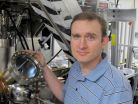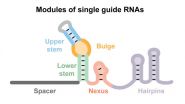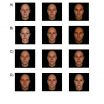Large variation in cesarean rates across US hospitals
2014-10-21
(Press-News.org) Cesarean delivery is the most common inpatient surgery in the United States. US cesarean rates increased from 20.7% in 1996 to 32.9% in 2009 but have since stabilized, with 1.3 million American women having had a cesarean delivery in 2011. Rates of cesarean delivery vary across hospitals, and understanding reasons for the variation could help shed light on practices related to cesarean delivery.
Katy Kozhimannil (University of Minnesota School of Public Health, Minneapolis, USA) and colleagues S.V. Subramanian and Mariana Arcaya (Harvard School of Public Health, Boston, USA) used the 2009 and 2010 US Nationwide Inpatient Sample from the Healthcare Cost and Utilization Project, a 20% sample of US hospitals, to study hospital variation in cesarean section rates. They analyzed data for 1,475,457 births in 1,373 hospitals, adjusting rates for maternal diagnoses and sociodemographics, as well as hospital characteristics like size, location, and teaching status.
They found that among all women the cesarean section rate was 33% overall and 22% among women without a prior cesarean section. Rates varied by maternal age, race/ethnicity, and insurance status, and medical diagnoses related to pregnancy and delivery. Variability in hospital cesarean rates did not decrease after adjusting for these maternal factors and hospital characteristics. They found significantly higher variation in hospital rates than would be expected, with the likelihood of cesarean delivery for all women ranging from 19% to 48% across hospitals. Among women without a prior cesarean section, the likelihood of having a cesarean delivery varied between 11% and 36% across hospitals. They also examined lower risk women, whose likelihood varied between 8% and 32% across hospitals, and higher risk women, whose likelihood varied between 56% and 92% across hospitals. A limitation is that these hospital administrative data, while nationally representative, did not contain information on parity or gestational age, factors that influence cesarean delivery decisions. These measures are collected in other countries such as the United Kingdom but are not routinely included in US hospital discharge summaries. The authors call for these data to be routinely collected and linked to facilitate US research as well as cross-country comparisons.
The authors say, "The findings from this analysis are consistent with studies in Arizona, in Massachusetts, and among births in US military hospitals; however, this analysis is the first to our knowledge to use a nationally representative US sample." They acknowledge the need for future research, "Many other systems- or clinician-based factors may influence use of cesarean section in US hospitals, including liability and insurance factors, the presence and type of a hospital's clinical training program, the role of midwifery, the presence of labor support or birth doulas, individual clinician approaches to labor and delivery management, and practices related to admission and labor management."
INFORMATION:
Research Article
Funding: Research reported in this manuscript was supported by the University of Minnesota's Building Interdisciplinary Research Careers in Women's Health (BIRCWH) Program (5K12HD055887) funded through a grant from the Eunice Kennedy Shriver National Institute for Child Health and Human Development (NICHD), and this research was also supported by the Robert Wood Johnson Foundation, through an Investigator Award in Health Policy Research. The funders had no role in study design, data collection and analysis, decision to publish, or preparation of the manuscript.
Competing Interests: The authors have declared that no competing interests exist.
Citation: Kozhimannil KB, Arcaya MC, Subramanian SV (2014) Maternal Clinical Diagnoses and Hospital Variation in the Risk of Cesarean Delivery: Analyses of a National US Hospital Discharge Database. PLoS Med 11(10): e1001745. doi:10.1371/journal.pmed.1001745
Author Affiliations:
University of Minnesota School of Public Health, USA
Harvard School of Public Health, USA
Contact:
Katy Backes Kozhimannil
University of Minnesota School of Public Health
UNITED STATES
+ 1 (612) 626-3812
kbk@umn.edu
ELSE PRESS RELEASES FROM THIS DATE:
2014-10-21
personalised nutrition based on an individual's genotype - nutrigenomics - could have a major impact on reducing lifestyle-linked diseases such as obesity, heart disease and Type II diabetes
a study of more than 9,000 volunteers reveals strict regulations need to be put in place before nutrigenomics becomes publicly acceptable due to people's fears around personal data protection
led by Newcastle University, UK, and involving experts from the universities of Ulster, Bradford, Porto (Portugal) and Wageningen (Netherlands), the study is the first to assess consumer acceptance ...
2014-10-21
EUGENE, Ore. -- Oct. 21, 2014 -- University of Oregon chemists have devised a way to see the internal structures of electronic waves trapped in carbon nanotubes by external electrostatic charges.
Carbon nanotubes have been touted as exceptional materials with unique properties that allow for extremely efficient charge and energy transport, with the potential to open the way for new, more efficient types of electronic and photovoltaic devices. However, these traps, or defects, in ultra-thin nanotubes can compromise their effectiveness.
Using a specially built microscope ...
2014-10-21
MADISON, Wis. — As Dane County begins the long slide into winter and the days become frostier this fall, three spots stake their claim as the chilliest in the area.
One is a cornfield in a broad valley and two are wetlands. In contrast, the isthmus makes an island — an urban heat island.
In a new study published this month in the Journal of Applied Meteorology and Climatology, University of Wisconsin-Madison researchers highlight the urban heat island effect in Madison: The city's concentrated asphalt, brick and concrete lead to higher temperatures than ...
2014-10-21
BETHESDA, MD – Age-related loss of the Y chromosome (LOY) from blood cells, a frequent occurrence among elderly men, is associated with elevated risk of various cancers and earlier death, according to research presented at the American Society of Human Genetics (ASHG) 2014 Annual Meeting in San Diego.
This finding could help explain why men tend to have a shorter life span and higher rates of sex-unspecific cancers than women, who do not have a Y chromosome, said Lars Forsberg, PhD, lead author of the study and a geneticist at Uppsala University in Sweden.
LOY, ...
2014-10-21
(Philadelphia, PA) – Chest pain doesn't necessarily come from the heart. An estimated 200,000 Americans each year experience non-cardiac chest pain, which in addition to pain can involve painful swallowing, discomfort and anxiety. Non-cardiac chest pain can be frightening for patients and result in visits to the emergency room because the painful symptoms, while often originating in the esophagus, can mimic a heart attack. Current treatment — which includes pain modulators such as selective serotonin reuptake inhibitors (SSRI) — has a partial 40 to 50 ...
2014-10-21
Customized genome editing – the ability to edit desired DNA sequences to add, delete, activate or suppress specific genes – has major potential for application in medicine, biotechnology, food and agriculture.
Now, in a paper published in Molecular Cell, North Carolina State University researchers and colleagues examine six key molecular elements that help drive this genome editing system, which is known as CRISPR-Cas.
NC State's Dr. Rodolphe Barrangou, an associate professor of food, bioprocessing and nutrition sciences, and Dr. Chase Beisel, an assistant ...
2014-10-21
A longstanding question among scientists is whether evolution is predictable. A team of researchers from UC Santa Barbara may have found a preliminary answer. The genetic underpinnings of complex traits in cephalopods may in fact be predictable because they evolved in the same way in two distinct species of squid.
Last, year, UCSB professor Todd Oakley and then-Ph.D. student Sabrina Pankey profiled bioluminescent organs in two species of squid and found that while they evolved separately, they did so in a remarkably similar manner. Their findings are published today in ...
2014-10-21
Research in recent years has shown that people associate specific facial traits with an individual's personality. For instance, people consistently rate faces that appear more feminine or that naturally appear happy as looking more trustworthy. In addition to trustworthiness, people also consistently associate competence, dominance, and friendliness with specific facial traits. According to an article published by Cell Press on October 21st in Trends in Cognitive Sciences, people rely on these subtle and arbitrary facial traits to make important decisions, from voting for ...
2014-10-21
(SALT LAKE CITY)—Workers punching in for the graveyard shift may be better off not eating high-iron foods at night so they don't disrupt the circadian clock in their livers.
Disrupted circadian clocks, researchers believe, are the reason that shift workers experience higher incidences of type 2 diabetes, obesity and cancer. The body's primary circadian clock, which regulates sleep and eating, is in the brain. But other body tissues also have circadian clocks, including the liver, which regulates blood glucose levels.
In a new study in Diabetes online, University ...
2014-10-21
DURHAM, N.H. –- Crewed missions to Mars remain an essential goal for NASA, but scientists are only now beginning to understand and characterize the radiation hazards that could make such ventures risky, concludes a new paper by University of New Hampshire scientists.
In a paper published online in the journal Space Weather, associate professor Nathan Schwadron of the UNH Institute for the Study of Earth, Oceans, and Space (EOS) and the department of physics says that due to a highly abnormal and extended lack of solar activity, the solar wind is exhibiting extremely ...
LAST 30 PRESS RELEASES:
[Press-News.org] Large variation in cesarean rates across US hospitals





